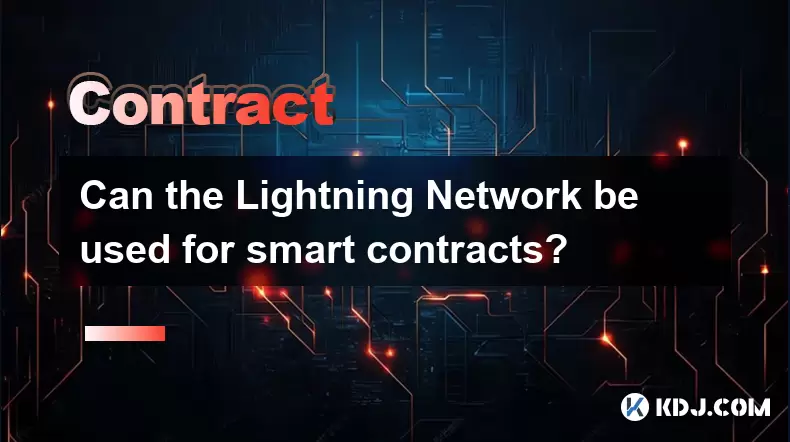-
 Bitcoin
Bitcoin $119,043.0040
1.29% -
 Ethereum
Ethereum $3,364.1624
9.11% -
 XRP
XRP $3.0604
5.59% -
 Tether USDt
Tether USDt $1.0004
0.03% -
 BNB
BNB $713.8994
3.57% -
 Solana
Solana $174.7967
7.99% -
 USDC
USDC $1.0000
0.00% -
 Dogecoin
Dogecoin $0.2161
10.54% -
 TRON
TRON $0.3087
2.55% -
 Cardano
Cardano $0.7739
5.11% -
 Hyperliquid
Hyperliquid $47.5122
0.66% -
 Stellar
Stellar $0.4617
3.50% -
 Sui
Sui $3.9953
-1.57% -
 Chainlink
Chainlink $16.8085
6.23% -
 Hedera
Hedera $0.2396
5.08% -
 Bitcoin Cash
Bitcoin Cash $503.4646
2.20% -
 Avalanche
Avalanche $22.8901
3.63% -
 Shiba Inu
Shiba Inu $0.0...01465
8.11% -
 UNUS SED LEO
UNUS SED LEO $8.8513
-0.78% -
 Toncoin
Toncoin $3.1822
4.82% -
 Litecoin
Litecoin $98.7701
3.10% -
 Polkadot
Polkadot $4.2122
4.94% -
 Monero
Monero $330.5225
-1.11% -
 Pepe
Pepe $0.0...01386
10.23% -
 Uniswap
Uniswap $9.1489
0.72% -
 Bitget Token
Bitget Token $4.7933
6.29% -
 Dai
Dai $1.0000
-0.01% -
 Ethena USDe
Ethena USDe $1.0009
0.03% -
 Aave
Aave $325.8264
0.74% -
 Bittensor
Bittensor $435.8997
1.71%
Can a smart contract be deleted?
Smart contracts are immutable by design, but can be deleted using the selfdestruct() function if implemented, though historical data remains on the blockchain.
Jul 14, 2025 at 03:49 pm

Understanding Smart Contracts and Immutability
A smart contract is a self-executing contract with the terms of the agreement directly written into code. It operates on blockchain platforms like Ethereum, where once deployed, it becomes part of the immutable ledger. This immutability is one of the core features of blockchain technology, ensuring that data cannot be altered or deleted after being recorded. Therefore, from a technical standpoint, smart contracts are designed to be permanent and not deletable.
However, this raises an important question: if a smart contract cannot be modified or removed, what happens when errors or vulnerabilities are discovered after deployment?
Self-Destruct Function in Solidity
In the context of Ethereum and other EVM-compatible blockchains, developers can include a special function known as selfdestruct() (formerly called suicide()) in their Solidity code. This function allows a contract to terminate itself and send its remaining Ether balance to a designated address.
- The syntax for this function is
selfdestruct(payable(address)). - When executed, the contract's bytecode and storage are removed from the state.
- However, the transaction history associated with the contract remains on the blockchain.
This means that while the contract's current state can be wiped out, its historical data remains permanently recorded on the blockchain.
Prerequisites for Deleting a Smart Contract
To delete a smart contract using the selfdestruct function, several conditions must be met:
- The contract must have a self-destruct mechanism coded in advance.
- The function must be callable by an authorized address—often the contract owner.
- There should be no external dependencies or tokens locked within the contract that could be lost during deletion.
If a developer does not include the selfdestruct function in the original code, there is no way to remove the contract from the blockchain retroactively.
Alternative Approaches to Managing Obsolete Contracts
When a contract cannot be deleted due to missing a self-destruct function, developers often adopt alternative strategies:
- Deprecation: Developers can mark a contract as obsolete and redirect users to a new version.
- Pausing functionality: Using a pausable contract pattern, developers can disable certain functions without deleting the contract.
- Proxy contracts: These allow upgrades to contract logic while maintaining the same contract address.
These approaches do not delete the contract but help manage its lifecycle and reduce risks associated with outdated code.
Security Implications of Deletable Contracts
Allowing a contract to be deleted introduces potential security concerns:
- If the selfdestruct function is accessible to unauthorized parties, it could lead to loss of funds or data.
- Malicious actors might exploit poorly secured self-destruct mechanisms to drain contract balances.
- Even after deletion, the contract’s past interactions remain visible, which could pose privacy issues in some use cases.
Therefore, implementing such a feature requires careful access control and thorough auditing.
Real-World Examples and Considerations
There have been real-world scenarios where developers had to rely on self-destruct functions to decommission faulty contracts:
- In 2016, the infamous DAO hack highlighted how vulnerable contracts could be exploited. Although the contract wasn't deleted immediately, a hard fork was required to recover funds.
- Many decentralized finance (DeFi) projects now include emergency shutdown functions, allowing them to pause or delete contracts in case of critical bugs.
Despite these examples, the vast majority of deployed smart contracts remain active indefinitely because they lack built-in deletion capabilities.
Frequently Asked Questions
Q: Can I delete a smart contract if I didn’t include a selfdestruct function?
A: No, if the contract was not programmed with a selfdestruct function or similar mechanism, it cannot be deleted or modified after deployment.
Q: Does deleting a smart contract erase all traces of it from the blockchain?
A: No, only the current state of the contract is cleared. Its deployment transaction and any prior interactions remain permanently stored on the blockchain.
Q: Who can trigger the selfdestruct function in a smart contract?
A: Only addresses granted permission in the contract code can execute the selfdestruct function. Typically, this is limited to the contract owner or a privileged role.
Q: Is it safe to include a selfdestruct function in a smart contract?
A: Including this function can introduce risks if not properly secured. It should be used with caution, including multi-signature controls and timelocks to prevent unauthorized deletion.
Disclaimer:info@kdj.com
The information provided is not trading advice. kdj.com does not assume any responsibility for any investments made based on the information provided in this article. Cryptocurrencies are highly volatile and it is highly recommended that you invest with caution after thorough research!
If you believe that the content used on this website infringes your copyright, please contact us immediately (info@kdj.com) and we will delete it promptly.
- Biofuel Services Powering Fleet Sustainability & Fuel Delivery: A New Era
- 2025-07-17 06:30:13
- Bitcoin, Altcoins, and Market Dominance: Decoding the Crypto Landscape
- 2025-07-17 06:30:13
- BlockDAG's X1 App Surpasses 2 Million Users Amid Telegram Push and Crypto Market Buzz
- 2025-07-17 05:10:12
- Litecoin, Remittix, Presale: Navigating the Crypto Landscape in 2025
- 2025-07-17 05:30:12
- Bitcoin, Ethereum, Bulls Control: Riding the Crypto Wave
- 2025-07-17 04:50:13
- Dogecoin Price Prediction: Will DOGE Bark or Bite in the Altcoin Frenzy?
- 2025-07-17 05:30:13
Related knowledge

What is a stablecoin-margined contract vs a coin-margined contract?
Jul 15,2025 at 06:36pm
Understanding the Difference Between Stablecoin-Margined Contracts and Coin-Margined ContractsIn the world of cryptocurrency derivatives, margin plays...

How to analyze volume profile for Bitcoin futures?
Jul 17,2025 at 01:21am
Understanding Volume Profile in Bitcoin Futures TradingVolume profile is a crucial analytical tool used by traders to assess the distribution of tradi...

How to backtest a Bitcoin futures trading strategy?
Jul 15,2025 at 11:35am
Understanding Bitcoin Futures TradingBitcoin futures trading involves contracts to buy or sell Bitcoin at a predetermined price and date in the future...

Psychology of trading Bitcoin contracts
Jul 13,2025 at 02:50am
Understanding the Emotional Rollercoaster of Bitcoin Futures TradingBitcoin contract trading, especially in the form of futures, introduces a high lev...

Can the Lightning Network be used for smart contracts?
Jul 14,2025 at 11:28pm
Understanding the Lightning Network's Core FunctionalityThe Lightning Network is a second-layer solution built on top of blockchain protocols like Bit...

How does macroeconomic news affect Bitcoin futures prices?
Jul 15,2025 at 04:56pm
Understanding the Relationship Between Macroeconomic News and Bitcoin FuturesBitcoin futures are derivative contracts that allow traders to speculate ...

What is a stablecoin-margined contract vs a coin-margined contract?
Jul 15,2025 at 06:36pm
Understanding the Difference Between Stablecoin-Margined Contracts and Coin-Margined ContractsIn the world of cryptocurrency derivatives, margin plays...

How to analyze volume profile for Bitcoin futures?
Jul 17,2025 at 01:21am
Understanding Volume Profile in Bitcoin Futures TradingVolume profile is a crucial analytical tool used by traders to assess the distribution of tradi...

How to backtest a Bitcoin futures trading strategy?
Jul 15,2025 at 11:35am
Understanding Bitcoin Futures TradingBitcoin futures trading involves contracts to buy or sell Bitcoin at a predetermined price and date in the future...

Psychology of trading Bitcoin contracts
Jul 13,2025 at 02:50am
Understanding the Emotional Rollercoaster of Bitcoin Futures TradingBitcoin contract trading, especially in the form of futures, introduces a high lev...

Can the Lightning Network be used for smart contracts?
Jul 14,2025 at 11:28pm
Understanding the Lightning Network's Core FunctionalityThe Lightning Network is a second-layer solution built on top of blockchain protocols like Bit...

How does macroeconomic news affect Bitcoin futures prices?
Jul 15,2025 at 04:56pm
Understanding the Relationship Between Macroeconomic News and Bitcoin FuturesBitcoin futures are derivative contracts that allow traders to speculate ...
See all articles

























































































